MRI Moiré Window
a
MRI Moiré Window
Patients can feel claustrophobic when getting an MRI exam because of the confined tunnel.
The HinesLab Moiré Window described here creates the open feeling of looking up and viewing the sky on a starry night. (“moiré”, French: “watery”)
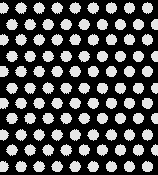 |
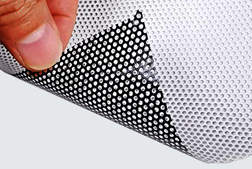 |
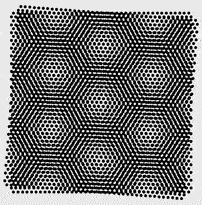 |
| The basic pattern | Perforated Vinyl |
Crossed screens |
Moiré patterns can be found online and in books, showing a pattern of dots sliding over another.
The HinesLab Moiré Window has two important differences. The two layers of dot patterns that create the moiré pattern are (1) stationary, and (2) spaced apart. This technique requires no additional hardware between the patient’s face and the underside of the tube.
The Moiré Window is a double-layered screen of perforated vinyl or dot patterns with a backlight. There are no moving parts, keeping the cost low.
Backlight:
. A paper thin, non-ferrous OLED* (Organic Light-Emitting Diode) back lights both dot-pattern screens, in either of two forms. *An iPhone with OLED screen has been successfully tested in an MRI machine by the NIH (National Institute of Health).
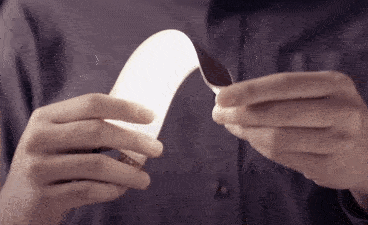 |
 |
| An OLED sheet can backlight both layers of perforated vinyl or dot-pattern screen, or | a digital OLED can create the upper dot pattern, viewed through the lower screen. |
. The interference pattern seen between the two dot-pattern screens creates the moiré pattern at a distance above the patient’s head, for example at the height of the ceiling or at optical infinity.
|
Depth cues . The Moiré Window makes use of the two strongest depth cues to establish the illusion of the moiré pattern above the patient. . The Stereoscopic 3D depth cue is created with identical moiré patterns for each eye, to cause the eyes to converge at a distance above the patient. This stereoscopic depth is reinforced by the Motion Parallax depth cue when the patient is being moved into the tunnel. |
The 7 depth cues: |
| When moving through the MRI machine, the view of the ceiling is replaced by the cloud pattern in the moiré window. | The patient’s view, lying on the table and looking up at the ceiling and then the moiré pattern, and the ceiling again. |
. Both eyes see moiré images that seem to move with you, as if at a distance, so that you will see no change of distance when entering, then inside the tube, and again outside the MRI machine.
Assembly:
. A gap or spacer is needed between the upper and lower dot pattern screens which can be curved glass (available from 1/8″ to 1” thick), or clear Plexiglas tubes (available 70cm diameter). The sides and bottom of a clear tube can be painted to block the patient’s view of the spinning mechanism. The thickness of the clear window provides control of the overall scale of the moiré pattern.
Other moiré imaging projects by Steve Hines, for possible interest:
Hines’ notebook #2:
HinesLab is actively seeking licensees to commercialize this patent pending technology. To discuss licensing, please contact Steve Hines at:
USA

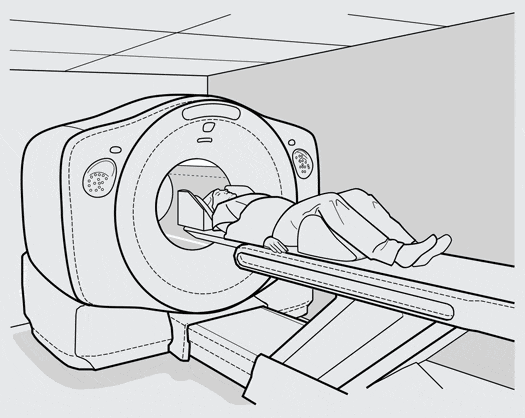
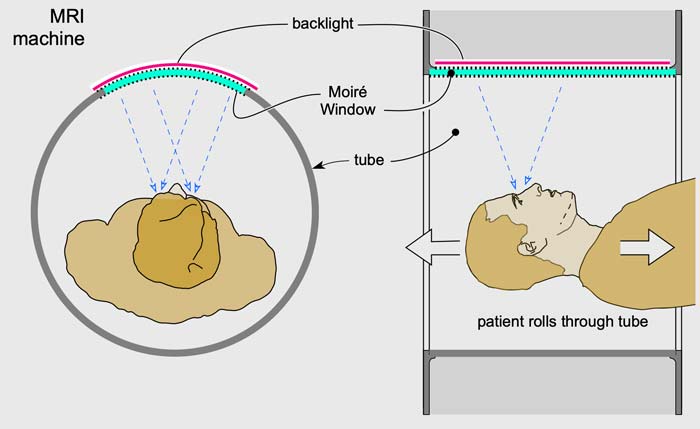
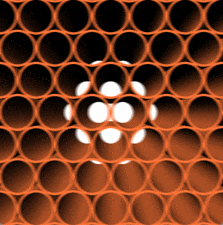
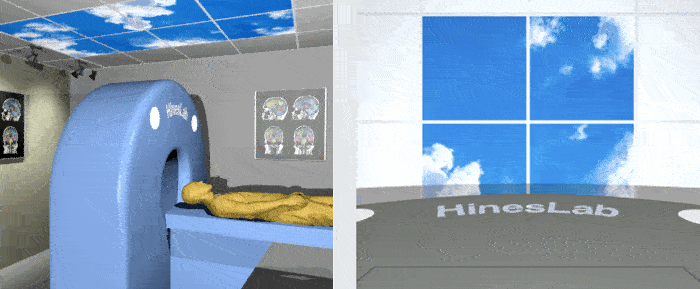
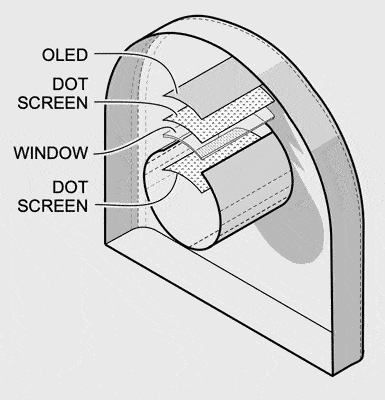
 p. 74
p. 74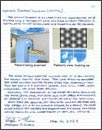 p. 75
p. 75